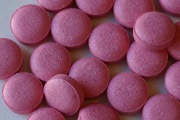
Popular belief does not expect women to “hold their liquor” as well as men, and this is one of those instances when science agrees with popular belief. If a man and a woman drink the same amount of alcohol, even if they are equal weight, the woman will have a higher concentration of alcohol in her blood. That’s because a greater proportion of the man’s body weight is water, which dilutes the alcohol; and also because the stomach walls of women compared to men contain less alcohol dehydrogenase, an enzyme that breaks down alcohol. Therefore, repeatedly drinking the same quantity of alcohol is likely to damage a woman’s organs—liver, heart muscle, brain—more quickly than a man’s. (Alcohol Metabolism) Published dietary guidelines reflect these differences and, for example, define moderate drinking as up to 1 drink per day for women and up to 2 drinks per day for men. (Dietary Guidelines) Continue reading




